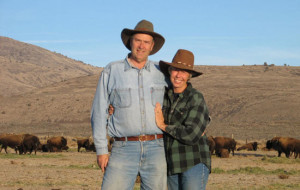La Félicité de Slotticca: Le Jeu de Hasard Magique aux Merveilles Cachées et aux Fortunes Éphémères
Des mystères millénaires se déploient devant vous, chaque tour de roue révélant une nouvelle énigme à résoudre, une nouvelle chance de vous hisser vers les sommets de l’opulence. Les éclats de rire des dieux de la fortune vous accompagnent tandis que vous tentez votre destinée, prêt à affronter les caprices du hasard et à saisir les instants de gloire fugace qui s’offrent à vous. Les symboles mystiques s’alignent devant vos yeux ébahis, promettant des récompenses étincelantes à ceux qui sauront interpréter leurs signes ésotériques.
Plongez-vous dans l’univers envoûtant de La Félicité de Slotticca, un jeu de hasard magique qui révèle des merveilles cachées et des fortunes éphémères à ceux qui osent s’aventurer dans ses mystérieux rouages. Dès que vous franchissez le seuil de ce monde fantastique, une ambiance envoûtante vous saisit, mêlant le frisson de l’inconnu à l’excitation du risque. Les murmures des anciens gardiens de la chance résonnent à vos oreilles, vous invitant à défier le destin et à convoiter les trésors dissimulés dans les recoins les plus sombres du jeu.
Introduction aux Casinos en Ligne
Que vous soyez un novice cherchant à explorer le monde du jeu en ligne ou un joueur aguerri à la recherche de nouveaux défis, les casinos en ligne offrent une plateforme dynamique pour s’amuser et peut-être même remporter de gros gains. L’accès facile, la diversité des jeux, les fonctionnalités interactives et la possibilité de jouer à tout moment de la journée font des casinos en ligne une option attrayante pour les amateurs de jeux de hasard. N’attendez plus pour plonger dans l’univers captivant des casinos en ligne et vivre des sensations fortes sans quitter votre foyer !
Grâce aux avancées technologiques, les casinos en ligne offrent une expérience immersive avec des graphismes de haute qualité, des effets sonores réalistes et même des croupiers en direct pour recréer l’ambiance authentique des casinos terrestres. De plus, la plupart des sites de jeux en ligne proposent des bonus de bienvenue attrayants, des promotions régulières et des programmes de fidélité pour récompenser les joueurs les plus assidus. Il est important de noter que les casinos virtuels sont régulés par des organismes de contrôle tels que la Malta Gaming Authority, assurant ainsi un environnement de jeu sûr et équitable pour tous les utilisateurs.
Les casinos en ligne sont devenus un phénomène mondial, offrant aux joueurs une expérience de jeu palpitante depuis le confort de leur domicile. Avec une multitude de sites de jeux d’argent en ligne tels que JackpotCity, Spin Casino, et 888 Casino, les passionnés de jeux de hasard ont un large choix d’options pour satisfaire leurs envies de divertissement. En plus des classiques comme le poker, le blackjack et la roulette, les casinos virtuels proposent également une gamme diversifiée de jeux de machines à sous, de bingo en ligne et de paris sportifs pour répondre aux préférences de tous les joueurs.
La Popularité des Jeux de Hasard en Ligne
L’attrait des jeux de hasard en ligne réside dans leur accessibilité et leur diversité. Les plateformes proposent une multitude de jeux adaptés à tous les goûts, du blackjack au bingo en passant par les paris sportifs. Les joueurs peuvent profiter de l’excitation du jeu depuis le confort de leur foyer, à tout moment de la journée ou de la nuit. Avec l’avènement des smartphones et des tablettes, il est désormais possible de jouer en déplacement, ce qui a contribué à l’expansion rapide du marché. En outre, les offres promotionnelles et les bonus de bienvenue attractifs proposés par les opérateurs attirent de nouveaux joueurs et fidélisent la clientèle existante. Cette combinaison d’accessibilité, de variété de jeux et d’incitations financières explique en grande partie l’engouement croissant pour les jeux de hasard en ligne.
Depuis l’avènement de l’Internet, les jeux de hasard en ligne ont gagné en popularité de manière exponentielle. Des plateformes renommées telles que Betway, PokerStars, et Betclic offrent une variété de jeux allant des machines à sous aux tables de poker en direct, attirant des millions de joueurs à travers le monde. Cette croissance fulgurante du marché des jeux de hasard en ligne est soutenue par des chiffres impressionnants. Selon une étude récente de l’ARJEL, l’autorité de régulation des jeux en ligne en France, le secteur a enregistré une augmentation de 25% des mises totales en 2020 par rapport à l’année précédente, atteignant un montant record de 1,7 milliard d’euros. Ces chiffres reflètent la montée en puissance des jeux de hasard en ligne comme une forme de divertissement prisée par un large public de joueurs, des amateurs occasionnels aux passionnés invétérés.
Les Attraits du Casino Virtuel
En explorant les recoins du casino virtuel, les joueurs découvrent une myriade d’options de paiement sécurisées, un service client dévoué et des programmes de fidélité généreux récompensant la loyauté des habitués. Avec des taux de redistribution compétitifs et des fonctionnalités interactives innovantes, l’expérience de jeu en ligne sur https://www.vertexchiropratique.com/ promet des moments riches en émotions et des opportunités de gain à chaque tour de roulette ou de carte. Plongez dans cet univers captivant et laissez-vous séduire par les attraits inégalés du casino virtuel, une destination de choix pour les amateurs de jeu en ligne à la recherche de sensations fortes et de succès instantanés.
Que vous soyez un novice curieux ou un joueur chevronné en quête d’adrénaline, le casino virtuel propose une expérience immersive à la hauteur des établissements terrestres les plus prestigieux de la ville. Les graphismes époustouflants et les effets sonores réalistes vous plongent au cœur de l’action, que vous jouiez depuis un ordinateur, une tablette ou un téléphone mobile. Les passionnés de jeux de hasard trouveront leur bonheur parmi les jackpots progressifs alléchants, les tournois en ligne palpitants et les offres promotionnelles exclusives disponibles sur
https://www.vertexchiropratique.com/
.
Les adeptes de jeux en ligne ont trouvé un refuge de divertissement sans pareil dans l’ère numérique grâce aux innombrables attraits du casino virtuel. En un simple clic, les joueurs sont transportés dans un univers fascinant où l’excitation bat son plein. Avec une variété impressionnante de jeux, des machines à sous élaborées aux tables de poker en direct, les options sont aussi diversifiées que les visiteurs du centre-ville. La plateforme de jeu en ligne https://www.vertexchiropratique.com/ est devenue un incontournable, offrant l’accès à des jeux de qualité supérieure et des bonus généreux, attirant ainsi une foule enthousiaste et fidèle.
Les Types de Jeux Proposés par les Casinos en Ligne
Que vous préfériez l’excitation des machines à sous ou la stratégie du blackjack, les casinos en ligne ont tout pour satisfaire les envies de jeu les plus diverses. Plongez dans un univers de divertissement en ligne et profitez de la diversité de jeux proposés par les principaux opérateurs de casino.
- Les machines à sous : Les machines à sous sont un incontournable des casinos en ligne, offrant une multitude de thèmes allant de l’Égypte antique aux super-héros.
- Le blackjack : Ce jeu de cartes stratégique est apprécié par de nombreux joueurs pour son mélange de chance et de compétence.
- La roulette : La roulette est un jeu de table emblématique où les joueurs misent sur des numéros et des couleurs pour gagner gros.
- Le poker en ligne : Des tournois de Texas Hold’em aux jeux de vidéo poker, le poker en ligne offre une expérience captivante pour les amateurs de cartes.
- Les jeux de croupier en direct : Profitez de l’interaction sociale et de l’authenticité des jeux de table avec de vrais croupiers diffusés en direct depuis des studios de casino.
Les casinos en ligne offrent une variété impressionnante de jeux allant des grands classiques aux titres les plus innovants. Vous trouverez ci-dessous une liste de quelques-uns des types de jeux les plus populaires disponibles sur les plateformes de jeu en ligne :
La Technologie et l’Innovation dans l’Industrie des Casinos en Ligne
Ces avancées technologiques et innovantes améliorent non seulement l’efficacité opérationnelle des casinos en ligne, mais elles enrichissent également l’expérience des joueurs en leur offrant des jeux plus interactifs, des transactions sécurisées et une personnalisation accrue. L’industrie des casinos en ligne continuera sans aucun doute à évoluer avec les progrès technologiques, offrant aux joueurs une expérience de jeu toujours plus immersive et divertissante.
- Intégration de l’intelligence artificielle : Les casinos en ligne utilisent l’IA pour personnaliser l’expérience de jeu, détecter la fraude et prédire les comportements des joueurs.
- Développement de la réalité virtuelle et augmentée : Les avancées en matière de réalité virtuelle et augmentée transforment les environnements de jeu, offrant aux joueurs une expérience immersive et interactive.
- Utilisation du blockchain dans les transactions : Les technologies de blockchain révolutionnent les paiements et les transactions des casinos en ligne en garantissant la transparence et la sécurité des opérations.
- Adoption du big data et de l’analyse prédictive : Les données massives collectées par les plateformes de jeux permettent aux opérateurs d’optimiser les offres promotionnelles, de prédire les tendances du marché et d’améliorer la prise de décision.
- Émergence du jeu mobile : Avec la popularité croissante des appareils mobiles, les casinos en ligne investissent dans des applications conviviales et des sites web optimisés pour offrir une expérience de jeu transparente sur les smartphones et tablettes.
La technologie et l’innovation jouent un rôle crucial dans le monde dynamique de l’industrie des casinos en ligne. Avec l’évolution constante des technologies numériques, les opérateurs de jeux d’argent en ligne doivent constamment s’adapter et innover pour rester compétitifs sur le marché. Voyons comment la technologie façonne l’expérience des joueurs et stimule l’innovation dans ce secteur en pleine expansion.
L’Importance de la Sécurité et de la Fiabilité des Casinos en Ligne
En fin de compte, les joueurs doivent rechercher des casinos en ligne réputés et bien établis pour s’assurer une expérience de jeu positive et sécurisée. En choisissant des marques reconnues dans l’industrie du jeu en ligne et en lisant des avis d’experts, les joueurs peuvent profiter pleinement de tout ce que les casinos en ligne ont à offrir, en toute tranquillité d’esprit. La sécurité et la fiabilité des casinos en ligne sont les piliers d’une expérience de jeu en ligne réussie et gratifiante, et les joueurs avisés sont bien conscients de l’importance de ces aspects pour garantir une expérience optimale et sans souci.
Les meilleurs casinos en ligne mettent en œuvre des mesures rigoureuses pour assurer la sécurité des transactions financières et des données personnelles de leurs utilisateurs. Grâce à des protocoles sophistiqués de cryptage des données et à des systèmes de sécurité de pointe, ces plateformes offrent un environnement sûr et fiable pour les parieurs en ligne. De plus, les organismes de réglementation compétents veillent à ce que les opérateurs de jeux en ligne respectent des normes strictes en matière de sécurité et de protection des consommateurs, garantissant ainsi l’intégrité et la légalité des jeux proposés.
De nos jours, l’industrie du jeu en ligne est en pleine expansion, offrant aux joueurs du monde entier une multitude d’options passionnantes pour s’adonner à leur passe-temps favori. Parmi ces choix, les casinos en ligne occupent une place de choix, attirant des millions de joueurs chaque jour. L’importance de la sécurité et de la fiabilité des casinos en ligne ne peut être surestimée. En effet, la confiance des joueurs dans la plateforme sur laquelle ils misent leur argent est essentielle pour garantir une expérience agréable et sans souci.
Les Avantages et les Inconvénients des Casinos en Ligne
Malgré les avantages indéniables qu’ils offrent, les casinos en ligne ne sont pas sans leurs inconvénients. La question de la sécurité et de la confiance est primordiale lorsqu’il s’agit de choisir un casino en ligne fiable. Il est essentiel de bien s’informer sur les plateformes de jeu pour éviter les arnaques et les fraudes.
| Avantages | Inconvénients |
|---|---|
| Large variété de jeux disponibles | Risque d’addiction au jeu |
| Bonus et promotions attractifs | Problèmes de sécurité des données personnelles |
| Accessibilité 24/7 depuis n’importe où | Moins d’interaction sociale par rapport aux casinos physiques |
Les casinos en ligne offrent de nombreux avantages par rapport aux casinos traditionnels. La facilité d’accès est l’un des principaux points forts des plateformes de jeu en ligne. Avec les casinos virtuels, les joueurs peuvent profiter de leurs jeux préférés depuis le confort de leur foyer, évitant ainsi les déplacements et les frais associés.
Conclusion: Profiter de l’Expérience des Casinos en Ligne de Manière Responsable
En conclusion, profiter de l’expérience des casinos en ligne de manière responsable est essentiel pour maintenir un équilibre sain et positif dans la pratique du jeu en ligne. En fixant des limites claires, en utilisant les outils de jeu responsable mis à disposition et en restant informé sur les questions liées au jeu compulsif, les joueurs peuvent pleinement apprécier tout ce que les casinos en ligne ont à offrir. Avec une approche prudente et réfléchie, le jeu en ligne peut rester une activité divertissante et enrichissante, tout en préservant la santé mentale et financière des individus. Souvenez-vous que le plaisir du jeu réside dans la responsabilité de chacun.
La protection des joueurs est une priorité pour les casinos en ligne, qui mettent en place des mesures strictes pour prévenir les comportements problématiques et fournir un environnement sûr et sécurisé. Il est important de choisir des plateformes de jeu réputées et licenciées, qui respectent les normes de sécurité et de transparence. En outre, il est conseillé de consulter des ressources d’information sur le jeu responsable, telles que des organisations spécialisées et des lignes d’assistance dédiées, en cas de besoin d’aide ou de soutien. En adoptant une approche consciente et mesurée du jeu en ligne, les joueurs peuvent maximiser leur plaisir tout en minimisant les risques potentiels pour leur bien-être et leur situation financière.
Les casinos en ligne offrent une expérience excitante et divertissante pour les joueurs du monde entier, avec une variété de jeux de hasard et d’opportunités de gains. Cependant, il est crucial de profiter de ces plateformes de manière responsable pour garantir une expérience positive et prévenir les problèmes liés au jeu compulsif. En tant que joueur, il est essentiel de définir des limites de temps et d’argent pour éviter de dépenser plus que ce que l’on peut se permettre. De plus, il est recommandé de se renseigner sur les mécanismes de jeu responsable offerts par les casinos en ligne, tels que les outils d’auto-exclusion et les limites de mises. Ces ressources peuvent aider à maintenir un équilibre sain entre le plaisir du jeu et la responsabilité financière.






